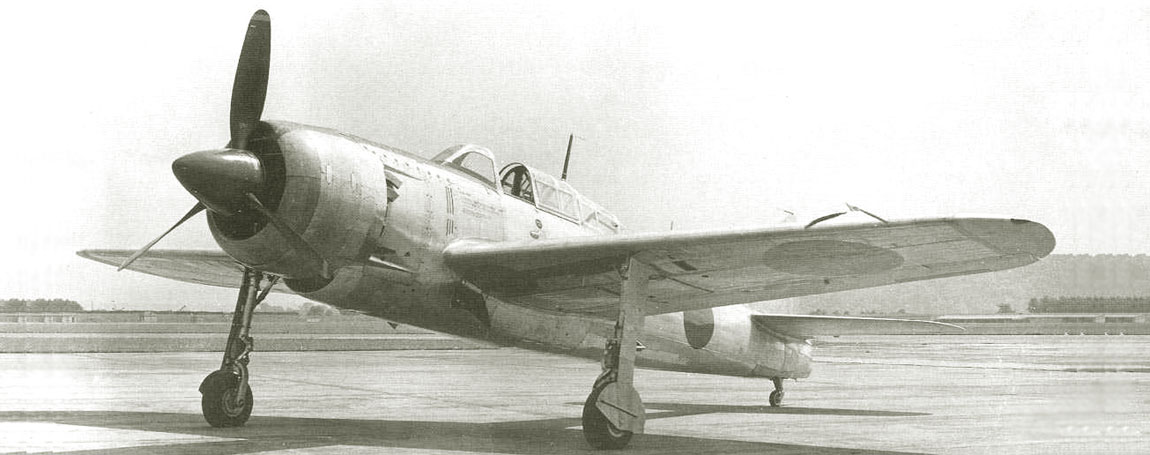
Aviation of World War II


 |
Aviation of World War II |


|
|
Soviet Union | Lend - Lease | Facts | Forum | Germany | Japan | R A F | U S A A F | Other | Photos | ||
|
| ||
D4Y "Suisei"
The plane that inflicted this heavy blow on the American fleet was the Susay-Kometa dive bomber - one of the most beautiful aircraft of the Second World War. It has been engineered with art that rivals those of the British Mosquito bomber. Even their fate is similar - designed as bombers, they were first used as reconnaissance aircraft and both were used as night fighters. But, despite its outstanding combat characteristics, the history of "Sussei" as it were ended with the defeat of Japan, and in comparison with the glory of "Mosquito" "Sussei" remained only in the hearts of rare aviation enthusiasts. Already while the first D3A1 was being tested, the Imperial Navy issued a new 13-C mission for the next generation of dive bombers. Initially, the Japanese naval headquarters planned to put into production a modified version of Heinkel He 118. The fleet acquired from the firm "Ernst Heinkel AG" experienced Not 118 V4 and license to manufacture it. The aircraft was tested in the spring of 1938 in Japan under the designation DXHel "experimental naval attack aircraft type He". But it turned out to be too heavy for use from an aircraft carrier, and plans for its mass production were rejected after the plane was destroyed in the air. But the characteristics of the He 118 impressed the Japanese naval headquarters, and as a result, the 13-C specifications appeared for a two-seater dive bomber with a maximum speed of 515 km / h, a cruising speed of 425 km / h, a flight range of 1450 km with a 250-kg bomb and 2200 km without bombs. There was no competition for this task - the order was received by the 1st Naval Aviation Technical Arsenal in Yokosuka, which was supposed to develop a reduced version of the He 118 for use from small aircraft carriers. Under the leadership of Chief Engineer Masao Yaman, Arsenal designers designed one of the most aesthetic single-engine bombers of World War II. The resulting D4Y1 barely resembled its progenitor He 118 - only the use of a 12-cylinder liquid-cooled engine Aichi "Atsuta" remained in common, which was a licensed version of the Daimler-Benz DB 601 A, which was on a German car. The aircraft had a wingspan of 11.5 m. Despite its small size, the D4Y1 carried the same amount of fuel as the larger D3A1 and had a bomb bay for 500 kg bombs. For use as a dive bomber, the aircraft had three electrically operated brake flaps. They stood right in front of the flaps. The fuel system included five unprotected tanks with a capacity of 1070 liters - one under the pilot's seat and four between the wing spars. Two 330-liter fuel tanks could be suspended under the wing. There was a 73-liter oil tank behind the engine. The defensive armament was the same as that of the D3A1: two synchronous 7.7-mm Type 97 machine guns and one movable 7.92-mm Type 1 machine gun in the rear of the cockpit. The plane could carry 560 kg of bomb load. Development of the D4Y1 progressed slowly - the small Yokosuka design bureau was having a hard time coping with the many technical innovations used on the aircraft. Since the Aichi "Atsuta" engine was not yet ready, the plane was equipped with a Daimler-Benz DB 600G purchased in Germany. The plane made its first flight in Yokosuka in December 1940. The flights were extremely successful, the characteristics were high, and the handling was pleasant. This was enough to start pre-production of the D4Y1. The next four prototype aircraft were also powered by imported DB 600G engines. By the time the testing of these machines was completed in 1941, it was decided to transfer production to the Aichi plant in Ettoku, since the naval arsenal did not have the necessary capacity. However, the rapid launch of the aircraft into production was prevented by the wing flutter during dive bombing tests. In this case, cracks appeared in the wing spar. Work on the pre-production vehicles for the Aichi engines had already gone far enough to change anything, and it was decided to finish them in the version of deck reconnaissance. The reconnaissance plane was equipped with a K-8 camera with a 250 mm or 500 mm lens. With engines Aichi AE1A "Atsuta" 1200 hp the aircraft was accepted into service under the designation "deck reconnaissance aircraft type 2 model 11" (Aichi D4Y1-C). At the same time, the aircraft retained the small arms, but the bomb racks were removed. 
|
|
|